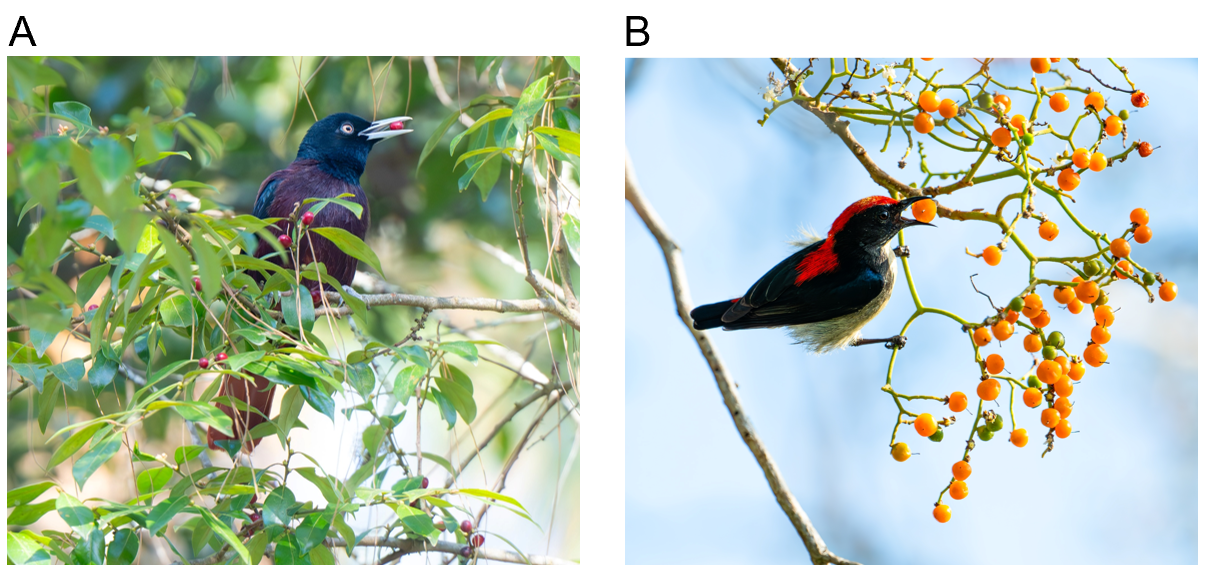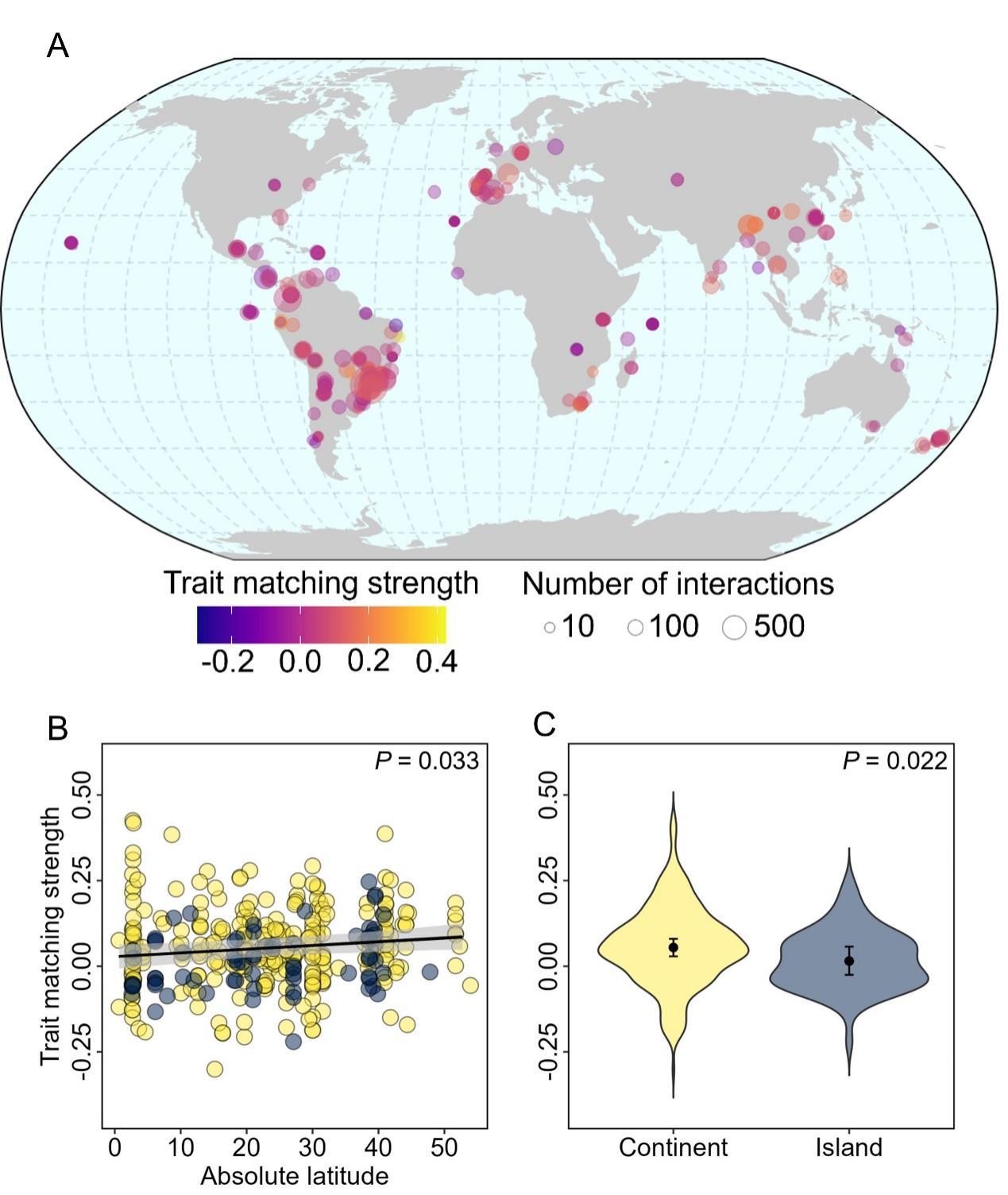Name:CHEN Sichong
Tell:
Email:chensichong@wbgcas.cn
Organization:Wuhan Botanical Garden
Study Reveals Global Patterns of Trait Matching in Plant-Frugivore Networks
2025-02-13
In 1862, Charles Darwin made a bold prediction of the existence of a moth with an extraordinarily long tongue, based on observing a comet orchid with long nectar spurs. In 1903, his prediction was confirmed with the discovery of a long-tongued hawkmoth. This remarkable story serves as a compelling example of morphological trait matching in nature. Trait matching plays a vital role in various types of biotic interactions, including the interactions between fruit-eating birds and plant fruits. However, how trait matching strength varies across geographic gradients and what factors drive these variations is still a mystery.
In a new study published in Ecology Letters, researchers from the Wuhan Botanical Garden of the Chinese Academy of Sciences enlightened the geographic patterns of trait matching in plant-frugivore networks. This research offers new insights into the processes underpinning the construction and maintenance of biotic interactions and biodiversity on a global scale.
The study, led by Professor CHEN Sichong, analyzed 354 networks of bird-plant interactions worldwide, encompassing over 22,000 individual interactions, and quantified trait matching strength, which reflected interaction strength and specificity cross gradients of latitude and insularity globally.
Since Darwin and Wallace, biologists have debated whether biotic interactions are stronger towards the tropics and on continents, when compared to temperate regions and islands. Trait matching between interacting species can reflect interaction strength. By quantifying the global variation of size matching between avian frugivores and fleshy-fruited plants, this new study sheds light on this debt from a new perspective. “Our study finds that trait matching between beak size of birds and fruit size of plants is significantly stronger towards the poles and on continents,” said Professor CHEN. “These findings support Darwin's hypothesis that biotic interactions on islands are weaker than those on continents, but challenge Wallace's view that interactions are stronger towards the tropics, offering new evidence and insights into the long-standing debates on global patterns of interaction strength and specificity.”
This study also identified three key ecological factors on trait matching. Among them, frugivory proportion and mean beak size had a positive effect on trait matching strength, while, the fleshy-fruited species proportion had a negative effect. A higher frugivory proportion and larger beak size may reflect strong co-evolutionary relationships between birds and plants, whereas a lower proportion of fleshy-fruited species could act as an ecological driver, compelling birds to selectively consume fruits that better match their beak morphology to meet nutritional demands. These findings suggest that geographic patterns, including the latitudinal and insular patterns, in trait matching are driven by biotic factors, likely tied to trait co-evolution between interacting species and optimal foraging for bird species.
This study was supported by the National Natural Science Foundation of China and the Chinese Academy of Sciences.

A: A Maroon oriole (Oriolus traillii) feeding on fruits of Spicewood (Lindera sp.); B: A Scarlet-backed flowerpecker (Dicaeum cruentatum) feeding on fruits of Mistletoe (Viscum sp.) (Photos by Midiexiang, Red Vision)

A: Global locations of frugivory networks and trait matching strength; B, C: Latitudinal and insular patterns of trait matching in plant-frugivore networks, respectively (Image by WBG)